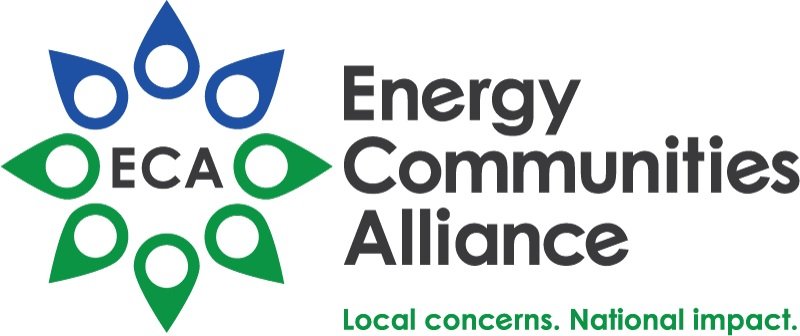ECA's takeaways from the FY 2021 budget request
NNSA increases $3.1 billion
EM decreases $1.4 billion
NE decreases $313 million
Science decreases $1.2 billion
LM increases $154 million
On February 10, President Trump revealed a budget request for Fiscal Year 2021, which seeks a $590 billion for nondefense spending (a 5 percent cut) and $671.5 billion for defense spending (almost a 1 percent increase). Decreased funding levels, especially for nondefense spending, are typical in the second year of a two-year budget deal. While Congress rarely adheres to a President’s budget request, it signals the administration’s priorities for the upcoming fiscal year.
Click image to enlarge.
Click image to enlarge.
Funding for nearly every non-defense cabinet agency would be decreased under the President’s request. Total DOE spending, for example, would be decreased by over $3 billion for a total of $35.4 billion.
Within DOE, the administration has set out priorities that are demonstrated by cuts and increases to certain programs, many of which impact ECA communities directly. ECA’s key takeaways from the budget request include:
1. Significant increase for NNSA
The National Nuclear Security Administration (NNSA) would see another increase to $19.8 billion, a 19 percent increase above the current level. The administration wrote in its budget release, “…the Budget continues investments to extend the life of warheads in the stockpile and modernize the supporting infrastructure.”
NNSA’s budget has been on the rise for the last few fiscal years, reaching record highs. Since FY 2018, the NNSA budget has risen from $14.6 billion to $16.7 billion in FY 2020.
2. Cuts to cleanup funding
The Office of Environmental Management (EM) would be funded at $6.1 billion (defense and non-defense). Several site budgets would be decreased under this request:
Richland (Hanford): Decrease from $1 billion to $654 million
Idaho National Laboratory: Decrease from $446 million to $270 million
Oak Ridge: Decrease from $682 million to $431 million
Los Alamos National Laboratory: Decrease from $220 million to $120 million
WIPP: Decrease from $403 million to $390 million
Some sites would be increased under the request:
Savannah River Site: Increase from $1.6 billion to $1.7 billion
West Valley Demonstration Project: Increase from $79 million to $92 million
3. Nuclear energy gets new focus
The budget request would fund the Office of Nuclear Energy (NE) at $1.18 billion in FY 2021, a $313 million decrease below last year’s funding level. However, the administration notes that it continues to believe nuclear energy is “critical to the Nation’s energy mix” and supports advancing nuclear energy technologies.
The budget summary explains, “The Budget provides $1.2 billion for R&D and other important nuclear energy programs, including nearly $300 million for the construction of the Versatile Test Reactor—a first of its kind fast reactor that would help the private sector develop and demonstrate new technologies.”
4. Plans for Yucca Mountain alternatives
After President Trump tweeted last week that he plans to seek alternatives to the Yucca Mountain repository, he did not request any funds for licensing the project in Nevada for FY 2021. Instead, the administration is “initiating processes to develop alternative solutions and engaging States in developing an actionable path forward.” The budget would also support implementation of an interim storage plan and a focus on alternative technologies that can be deployed “where there is a willingness to host.”
Following the budget release, Secretary of Energy Dan Brouillette spoke to reporters and elaborated, “We’re going to look at new technologies that might allow us to address the spent fuel … But importantly we’re going to work with governors, we’re going to work with policy makers, we’re going to work with private industry to find solutions that may turn out to be on an interim basis.”
Senate Energy Chair Lisa Murkowski (R-AK) commented, “It might actually breathe new life into the bipartisan bill … Maybe this now allows for us to move forward with the interim proposals—the consent-based sites.”
What’s next?
At ECA’s annual conference on January 31, several speakers indicated that it is unlikely for the FY 2021 budget to be passed this year prior to the presidential election.
Recent presidential election years suggest the FY 2021 budget will likely be passed several months late. In 2016, only one appropriations bill was passed before November, with the remaining bills passed the following April. In 2012, no appropriations bills were passed until the following April.
The next step in the budget process is for each Cabinet secretary to appear on Capitol Hill in front of relevant committees to justify the administration’s request. This year, Senate Budget Chairman Mike Enzi (R-WY) announced that he will not hold hearings on the budget request, but other committees in the House and Senate are still expected to hear from agency officials.
Keep track of the latest budget request and appropriations news with ECA’s online federal budget tracker.
View the President’s FY 2021 budget request here. Detailed funding tables are available in the DOE appendix here.
